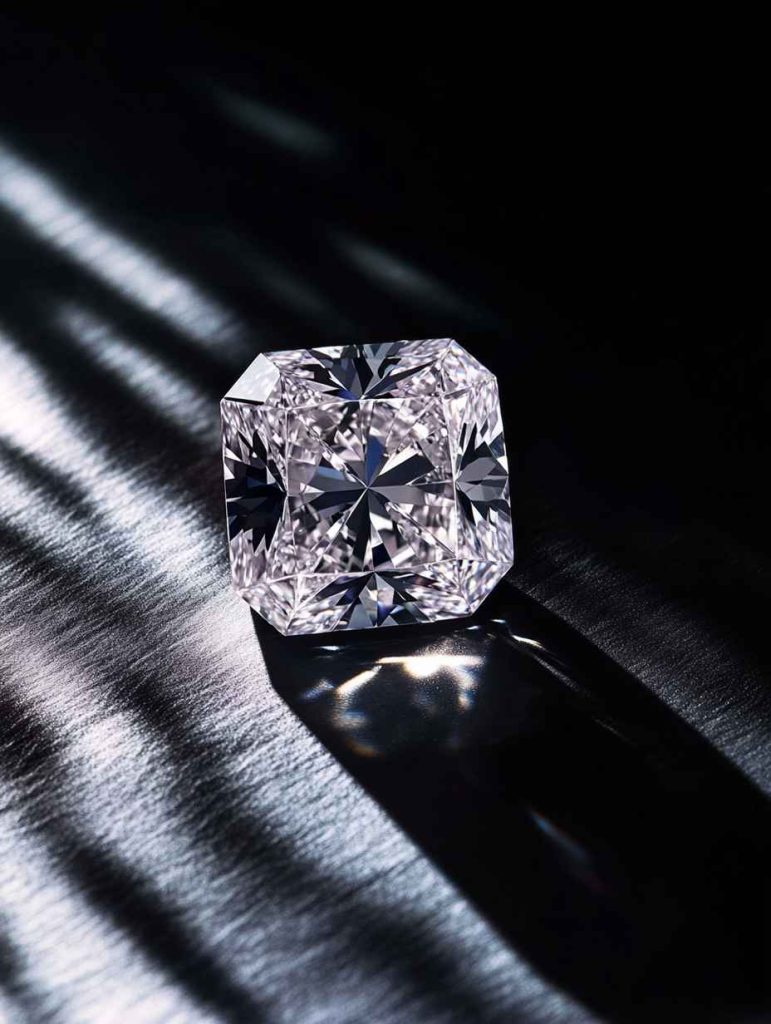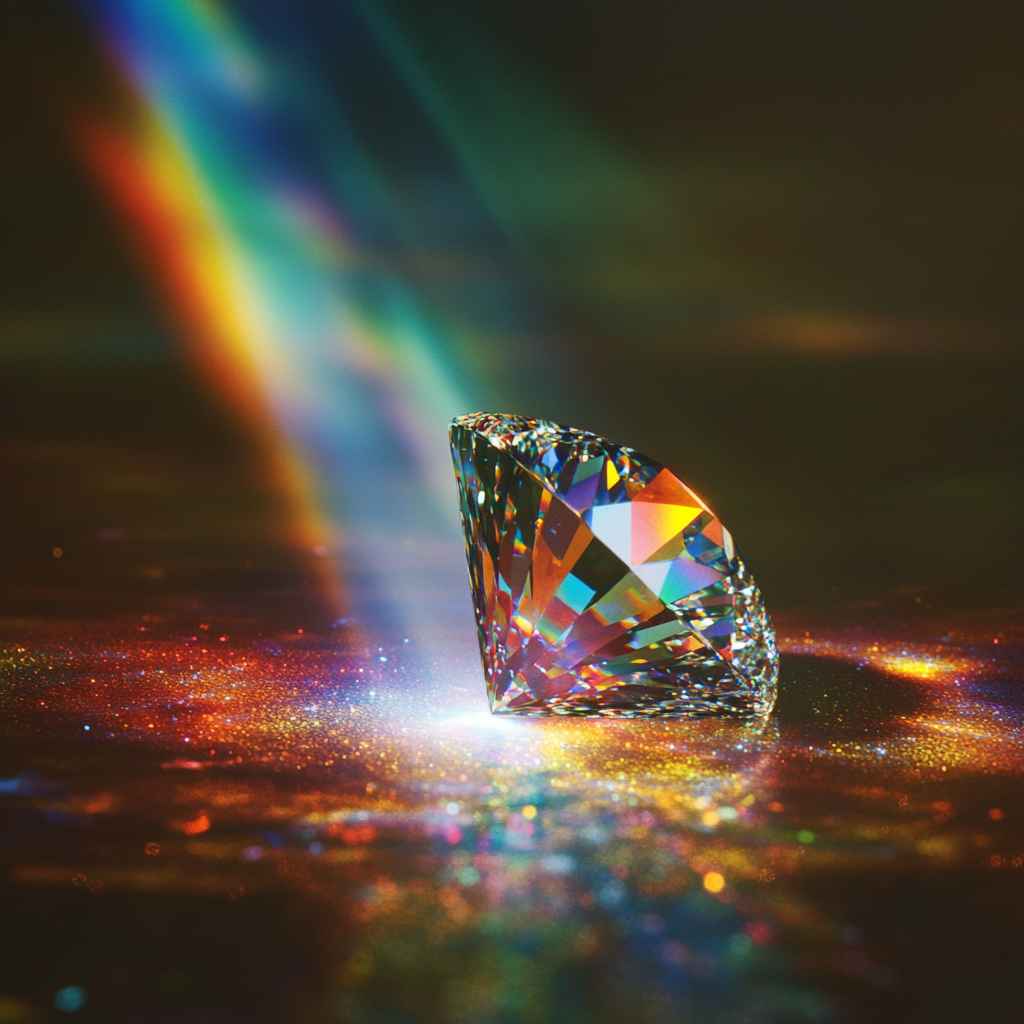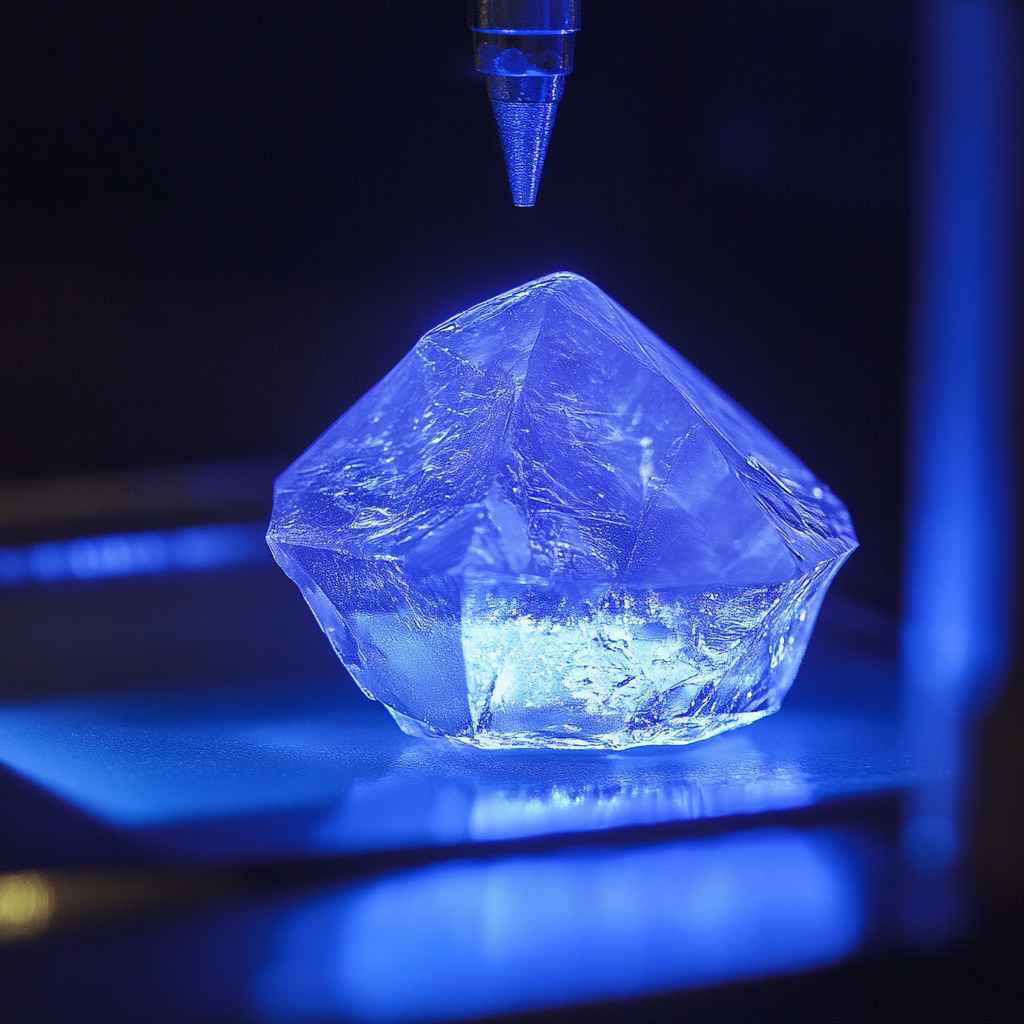Have you ever held a diamond and wondered, “Does this diamond shine in the dark?” It’s a question that sparks curiosity for many.
The truth might surprise you. Let’s uncover whether diamonds can sparkle without light.
Why Do Diamonds Sparkle?
Diamonds are loved for their sparkle. But how does it happen?
- Reflection: Light hits the diamond and bounces back, creating brilliance.
- Refraction: Light bends as it moves through the diamond, enhancing its sparkle.
- Dispersion: White light splits into a rainbow of colors, adding a magical effect.
💡 Key Point: Diamonds need light to sparkle. Without light, they don’t shine.
For more insights into diamond beauty, explore How to Tell a Good Diamond.

Do Diamonds Glow in the Dark?
The simple answer? No, diamonds don’t glow in complete darkness.
Here’s why:
- No Phosphorescence: Diamonds don’t emit light like glow-in-the-dark materials.
- Dependence on Light: They need an external light source to sparkle.
💎 Interested in understanding diamond brilliance? Read Why Diamonds Are Expensive.
What About Fluorescence in Diamonds?
Some diamonds do show a glow under ultraviolet (UV) light.
What Is Fluorescence?
- Definition: It’s the ability of a diamond to emit a soft glow under UV light.
- Common Colors: Blue is the most common fluorescence color.
💡 Note: Fluorescence happens under UV light, not in complete darkness.
For example, under black lights (like in nightclubs), a fluorescent diamond may glow faintly.
Myths and Misconceptions
Diamonds are surrounded by myths. Let’s bust some common ones:
- Myth: Diamonds emit their own light.
- Fact: Diamonds don’t produce light. They only reflect and refract it.
- Myth: All diamonds glow under UV light.
- Fact: Only about 30% of diamonds show fluorescence.
Simple Experiments to Try
Testing for Fluorescence
What You Need:
- A UV light source (like a black light).
- Your diamond.
How to Do It:
- Turn off regular lights.
- Shine the UV light on the diamond.
- Observe the result.
- Glows: Your diamond has fluorescence.
- No Glow: Your diamond doesn’t fluoresce.
💎 Curious about unique diamond features? Check out 1 Carat Diamond Ring.
Does Fluorescence Affect Value?
The impact of fluorescence on a diamond’s value depends on several factors:
- Strong Fluorescence: Can sometimes make a diamond less valuable.
- Visual Impact: In most cases, it’s barely noticeable to the naked eye.
- Cost Advantage: Fluorescent diamonds are often more affordable.
💡 Tip: If you like the uniqueness of fluorescence, it could be a great choice!
Frequently Asked Questions
Q: Can diamonds glow after exposure to light?
A: No, diamonds don’t store light energy. They need continuous light to shine.
Q: Do fake diamonds glow in the dark?
A: Some imitation diamonds or gemstones may glow, but real diamonds do not.
Q: Why do diamonds sparkle so much under light?
A: It’s because of their high refractive index and precise cutting, which maximizes reflection and dispersion.
For tips on diamond care, visit How to Care for Jewellery.
Final Thoughts
So, does a diamond shine in the dark? The answer is no. Diamonds need light to sparkle and show their brilliance.
Key Takeaways:
- Light-Dependent: Diamonds reflect and refract light but don’t emit it.
- Fluorescence Is Rare: Only some diamonds glow under UV light.
- True Beauty Needs Light: To enjoy a diamond’s sparkle, good lighting is essential.
✨ Ready to explore the fascinating world of diamonds? Check out Why Is Jewellery Made of Gold? to learn more about the allure of fine jewelry.

